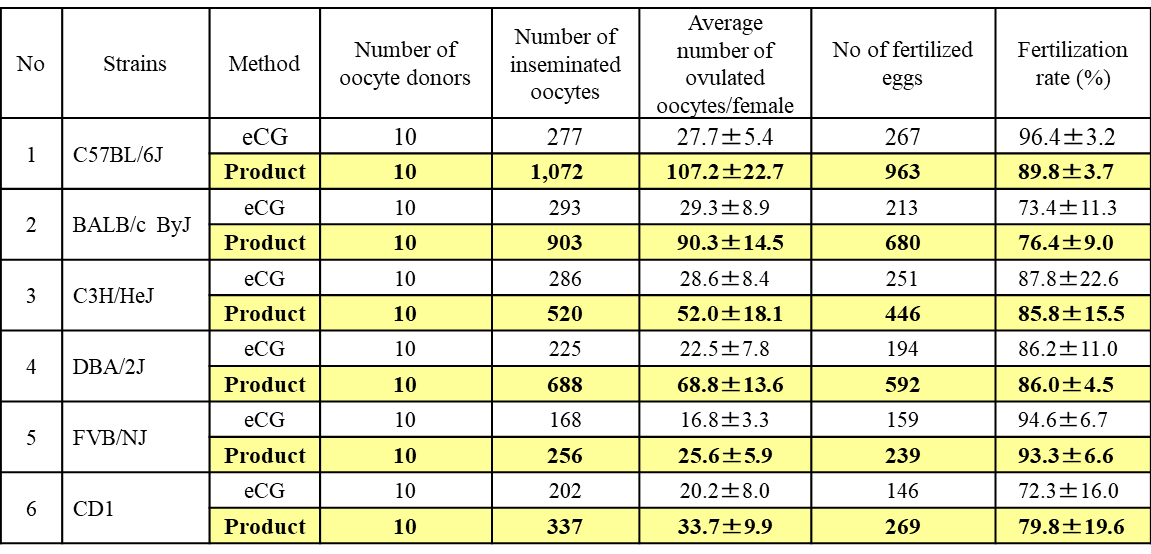生殖工学試薬
Reagent outline
![]() CARD HyperOva® Superovulation Reagent for Mice
CARD HyperOva® Superovulation Reagent for Mice
CARD HyperOva® is an enhanced superovulation reagent developed with
the aim of inducing ovulation at a higher rate than possible following
the conventional superovulation method (PMSG-hCG method). Using this reagent
will enable more unfertilised ova to be obtained from less ova-supplying
mice in comparison with the conventional method. Moreover, it is expected
to increase the number of 2-cell embryos obtained using CARD MEDIUM® during in vitro fertilization to create genetically modified mice.
* Mouse Superovulation Regent CARD HyperOva® is produced and sold by Kyudo Co., Ltd. This product has been patented.
![]() CARD HyperOva®F.D.(freeze-dry)
CARD HyperOva®F.D.(freeze-dry)
CARD HyperOva®is an ultra-superovulation reagent that induces ovulation at higher efficiency.
This product can be stored refrigerated(4℃) by freeze-drying. It improved storage stability compared to conventional product.
Table. Effect of CARD HyperOva® on various mouse strains

・ The in vitro fertilization rate is defined as the number of 2-cell embryos divided by the total number of ova (mean±SD).
・ Data referred from a paper published by Prof. Naomi Nakagata and Toru Takeo (Center for Animal Resources and development, Kumamoto University).
![]() Effect
Effect
Using CARD HyperOva® enables us to reduce the number of female mice used for ovum collection by 1/3-1/4.
Ⅱ. Optimization of Genetically Modified mouse Creation and Preservation More ova can be obtained from less female mice using CARD HyperOva® than following the conventional method, which will facilitate in vitro fertilization and embryo transfer.
Ⅲ. Application to Valuable Genetically modified Mice Using CARD HyperOva® on your valuable genetically modified mice enables you to obtain a lot of ova from small number of females, thus enabling the large-scale preparation of embryos.
Product structure
| Product name | Standard |
|---|---|
| CARD HyperOva® Superovulation Reagent for Mice | 0.6 mL |
| 1.0 mL | |
| CARD HyperOva®F.D.(freeze-dry) | 1Kit(2.0 mL) |
| 5Kit(2.0 mL) |


* Swollen area of an oviduct which has undergone superovulation and mice obtained via in vitro fertilization.







